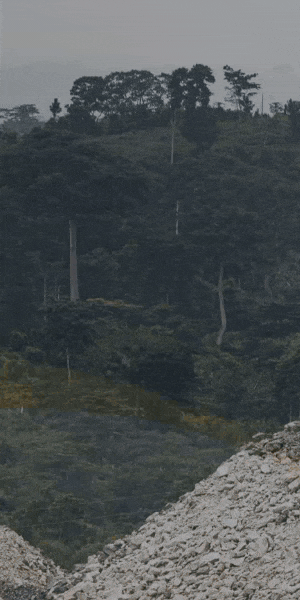i-80 Gold Q3 2025 Results: Nevada Development Strategy Accelerates

i-80 Gold advances Nevada gold mines toward 200K oz/year by 2028 with $200-300M EBITDA target as permanent dewatering enables access to higher-grade zones.
- i-80 Gold reported its strongest quarterly gross profit since inception at $3.1 million in Q3 2025, driven by improved operations at Granite Creek and higher gold prices, with revenue increasing to $32 million compared to $11.5 million in the prior year period.
- The company completed installation of permanent dewatering infrastructure at Granite Creek underground mine during Q3, addressing water management challenges that had previously hampered development at depth where grades and ground conditions improve.
- Construction commenced at Archimedes underground project during the quarter, marking i-80 Gold's second underground mine development and a key milestone in the company's three-phase development plan to reach 200,000 ounces of annual gold production by 2028.
- Infill drilling programs across multiple projects are expected to materially increase mineral resources, with early indications from Cove feasibility work pointing to 10-20% higher reserves than preliminary economic assessments, and similar improvements anticipated at Granite Creek.
- The company is advancing a recapitalization strategy with six term sheets in hand, targeting completion by mid-2026 to fund the $400 million Lone Tree autoclave refurbishment and broader development plan, with toll milling costs currently impacting margins by $1,000-$1,500 per ounce.
Introduction to i-80 Gold & Development Plans
i-80 Gold has established itself as a Nevada-focused gold producer with an ambitious growth trajectory centered on the Battle Mountain-Eureka Trend. President and CEO Richard Young outlined the company's strategic vision, emphasizing the multi-phase development plan announced twelve months prior.
"We announced 12 months ago a three-phase development plan that would take production from less than 50,000 ounces of gold per year to over 600,000 ounces of gold production annually," Young explained, framing the company's transformation from a modest producer to a significant Nevada gold operation.
The company operates multiple underground and open-pit projects across Nevada's prolific gold districts, with a central processing strategy centered on refurbishing an existing autoclave facility. This integrated approach allows i-80 to leverage existing infrastructure while systematically bringing new production sources online through a carefully sequenced development timeline.
Nevada's advantages extend beyond geology to workforce quality and permitting familiarity, critical factors in executing complex mine development. The three-phase plan balances near-term production growth with longer-term resource expansion, positioning the company to capitalize on favorable gold price environments while maintaining operational discipline.
Interview with President & CEO, Richard Young
Q3 Performance & Future Expectations
Third quarter results marked a turning point for i-80 Gold, with the company achieving record gross profit despite ongoing operational transitions. The quarter demonstrated progress in ramping up production at Granite Creek, though current economics remain constrained by toll milling arrangements that the company plans to eliminate.
"It was the best quarter over the life of i-80 in terms of our gross profit, which reflects the fact that we are ramping up Granite Creek and that's moving in the right direction," Young stated, highlighting the operational momentum building across the company's asset base.
Revenue increased alongside gold sales volumes, though processing costs remained elevated due to toll milling expenses ranging between $1,000 and $1,500 per ounce. This temporary cost structure obscures the underlying economics that will emerge once the company's autoclave becomes operational, creating what management described as "a bit of a red herring" for investors analyzing current margins.
Looking forward, the company projects reaching approximately 200,000 ounces of annual production by 2028, generating EBITDA in the $200-300 million range depending on gold prices. This production profile assumes successful ramp-up of Archimedes and Cove underground mines alongside continued Granite Creek optimization, all feeding the central autoclave facility.
The cash balance stood at just over $100 million at quarter-end, reflecting active deployment of capital across multiple development fronts. Management emphasized that the $92 million raised in Q2 provides sufficient funding through Q2 2026 for planned development activities, with recapitalization efforts advancing to secure longer-term project financing.
Operational Challenges & Infrastructure Improvements
Water management at Granite Creek has been the primary operational constraint limiting deeper mining access and production optimization. The company addressed this challenge during Q3 with permanent infrastructure installation that fundamentally changes the mine's development trajectory.
"During the third quarter, we installed a permanent dewatering system that is able to remove the water to surface and now over the next six months, we'll be building the necessary infrastructure," Young explained, adding that "the water issue will no longer be a challenge."
This infrastructure investment enables acceleration of development at depth where geological conditions and grades improve substantially. The company plans to construct a water treatment plant in Q1 2025, allowing treated water discharge to the local basin and preventing recirculation underground that has hampered development progress.
The resolution of water management constraints directly impacts mining economics by enabling access to higher-grade zones with better ground conditions. Improved ground conditions translate to faster mining rates and lower dilution, both critical factors in underground mining economics that should become apparent as deeper mining progresses.
As mining rates increase at Granite Creek, the company expects unit mining costs to decline, though this benefit remains partially obscured by elevated toll milling processing charges. The infrastructure investments represent structural improvements rather than temporary fixes, positioning operations for sustained production growth.
Drilling Programs & Resource Growth
i-80 completed over 53,000 feet of drilling during Q3, advancing infill programs at multiple deposits while conducting step-out exploration to test resource extensions. The drilling results have consistently exceeded internal expectations, with management's characteristically conservative approach to resource estimation proving warranted.
"The infill program was completed in the first quarter. And again, it's a material increase in the resource that we expect to report when that feasibility work is done," Young noted regarding Cove underground mine, where the total mineralized envelope expanded 10-20% beyond preliminary economic assessment estimates.
At Granite Creek, a 47-hole program wrapping up in mid-December is showing similarly encouraging results. The company announced initial results from six holes in September before the Beaver Creek conference, with assays now complete for 35 of 47 holes showing "consistently solid" grades over good widths.
The South Pacific Zone at Granite Creek represents a particular focus, with drilling aimed at both infill to convert resources to reserves and step-out holes testing extensions. Successful step-out drilling has prompted additional holes to fill gaps between known mineralization and new intercepts, suggesting potential for significant resource expansion.
Management emphasized the geological similarities between Granite Creek and nearby Turquoise Ridge, a roughly 30 million ounce discovery owned by Nevada Gold Mines. Both deposits show comparable structural controls and mineralization styles, with expectations that Granite Creek will demonstrate similar improvement in grades, ground conditions, and lateral extent at depth.
The company also initiated drilling at Archimedes in early November, planning a two-phase program through 2025. The upper zone will be drilled through Q1, followed by lower zone drilling in Q2 through year-end 2025, supporting a feasibility study targeted for early 2027.
Feasibility Studies and Economic Assessments
i-80 released five preliminary economic assessments in Q1 2025 covering its main gold deposits, with management indicating at the time that estimates were conservative and would likely improve as infill drilling progressed. This prediction is proving accurate as programs advance.
"We indicated at the time that we thought they were conservative. And as we completed the infill drill programs that are required to get the spacing required for reserves that the economics would improve," Young explained, pointing to Cove's already-demonstrated 10-20% resource growth as validation.
The company expects to deliver three feasibility studies between Q1 2026 and Q1 2027 for Granite Creek, Archimedes, and Cove, the three underground mines that will feed the central autoclave. These studies will incorporate larger reserve and resource bases than the preliminary assessments while maintaining largely similar cost assumptions.
Capital and operating cost estimates should remain in line with PEA projections, though management noted potential trade-offs between higher recovery rates and higher costs given current gold prices. The primary economic driver will be substantially larger reserve bases enabling longer mine lives and improved project economics.
Granite Creek's upcoming feasibility study will incorporate mine life extensions from the South Pacific Zone, integrating recent drilling results that demonstrate the ore body's continuity and grade characteristics. The Range Fault Zone represents additional exploration upside that may contribute to future resource updates beyond the initial feasibility work.
For Archimedes, Barrick's previous work provides a foundation that i-80 is building upon with current drilling programs. The company is advancing engineering work in parallel with drilling to support the early 2027 feasibility timeline, maintaining momentum across multiple development fronts simultaneously.
Permitting & Future Projects
Environmental baseline work and permitting activities are advancing across i-80's project portfolio, with management targeting an accelerated timeline for key assets. The company holds significant baseline data from previous operators at several projects, providing a head start on regulatory processes.
"Barrick had done a lot of work on Mineral Point. So Mineral Point is quite advanced," Young noted, explaining the rationale for potentially accelerating this project's development timeline through earlier infill drilling and technical work.
Original development plans scheduled Mineral Point work for 2028-29, funded by Phase 1 production cash flows. However, management now sees opportunity to bring forward infill drilling and technical studies into 2026, requiring approximately $40 million in additional recapitalization proceeds.
This acceleration could enable permitting for Archimedes below the 5100 level, which in turn allows for earlier development of Mineral Point. The strategic sequencing aims to have Mineral Point, Cove, and Granite Creek open pit all permitted before year-end 2028, significantly expanding the company's production profile.
The permitting strategy focuses on securing approvals for multiple projects in parallel rather than sequential development. Nevada's regulatory environment, while rigorous, provides established pathways for mine permitting with clear timelines and requirements that experienced teams can navigate efficiently.
i-80's operational history in Nevada and established relationships with regulatory agencies provide advantages in advancing permits. The company's projects also benefit from existing disturbance at several sites from previous mining activities, potentially streamlining environmental review processes.
Refurbishment Plans & Financial Strategies
The autoclave refurbishment at Lone Tree represents i-80's most significant near-term capital project and the key to unlocking margins currently being paid to toll milling operators. Hatch Engineering has largely completed design work for refurbishing the facility, which originally built the autoclave and brings deep technical familiarity to the project.
"The refurbishment's roughly $400 million if you're producing 200,000 ounces a year, and you improve your margin by $1,000 to $1,500, there's a very quick payback on that refurbishment," Young explained, emphasizing the project's economic attractiveness despite the substantial capital requirement.
The company has hired an owner's team with direct experience operating this specific autoclave, reducing execution risk and providing operational continuity from existing operations through refurbishment to restart. The board approved a $25 million limited notice to proceed in Q2, empowering Hatch to begin detailed engineering.
This initial authorization enables two critical paths: ordering long-lead equipment to maintain the project schedule, and initiating permitting processes for new equipment components that require regulatory approval. Both activities are progressing as planned, with full construction expected to accelerate by Q2 2026.
The development timeline targets first gold pour from the refurbished autoclave before year-end 2027. Meeting this schedule is critical for achieving the 2028 production and EBITDA targets, as toll milling costs of $1,000-$1,500 per ounce represent the primary constraint on current profitability.
Management is advancing recapitalization discussions with multiple financing sources, holding six term sheets from various parties.
"We've got half a dozen term sheets. And again, not all of our projects are permitted with feasibility studies. We've got a bit of a mismatch, but it just shows the strength of the asset base," Young noted.
The financing discussions encompass multiple structures, with management working to present the board with two or three viable options for final decision. The goal is securing funding for both Phase 1 and Phase 2 development, plus feasibility and permitting work for Phase 3, creating a fully-funded path to the company's production targets.
Recent equity financing of $92 million provides runway through Q2 2025 for ongoing development activities, with the recapitalization targeted for completion during this timeframe. The company's producing assets, permitted projects, and Nevada location make it attractive to various financing sources despite the current mismatch between project maturity levels.
Team Building & Operational Execution
Behind the technical achievements and development milestones stands i-80's success in assembling an experienced team capable of executing complex mine development. Nevada's deep mining talent pool has enabled the company to recruit across technical disciplines critical for successful project delivery.
"We've been able to build the team up. That was something we talked about during the third quarter call. And some people might brush it off, the senior people don't actually do the work. It's that level below and a couple levels down. The mining engineers, the metallurgists, the structural geologists, and we've been able to hire really good people," Young emphasized.
The team's quality extends beyond senior leadership to the engineers, geologists, and metallurgists who perform detailed technical work. This depth enables simultaneous advancement of multiple projects: drilling programs, engineering studies, permitting applications, and operational improvements, without sacrificing quality or creating bottlenecks.
Collaborative working relationships among team members have proven essential as the company juggles competing priorities across its asset base. The feasibility studies, reserve estimates, and technical work flowing from the team demonstrate both individual expertise and effective coordination across disciplines.
Nevada's workforce advantages complement the state's geological prospectivity, creating an environment where experienced mining companies can execute ambitious development programs. i-80 has leveraged these advantages by recruiting from established Nevada operations and drawing on the state's mining culture.
"I've been in prior companies where we couldn't hire people and you can't execute when you don't have the people and particularly the right people. And that's one of the things that makes Nevada one of the best places globally to operate, not just the geology, but the quality of the workforce," Young concluded.
The Investment Thesis for i-80 Gold
- Production Growth Trajectory: Clear path from current sub-50,000 oz/year production to 200,000 oz/year by 2028, with potential for 600,000+ oz/year at full three-phase development
- Margin Expansion Catalyst: Autoclave refurbishment eliminates $1,000-$1,500/oz toll milling costs, directly converting to EBITDA improvement on 200,000 oz annual production
- Resource Growth Delivery: Infill drilling consistently exceeding conservative PEA estimates, with 10-20% envelope expansion at Cove and similar expectations at Granite Creek demonstrating organic growth
- Nevada Operational Advantage: Tier-1 jurisdiction with established infrastructure, quality workforce, understood permitting timelines, and proximity to major discoveries like 30-million-ounce Turquoise Ridge
- Multiple Value Inflection Points: Three feasibility studies delivering Q1 2026-Q1 2027, autoclave commissioning by year-end 2027, and parallel permitting advancement create sequential catalysts
- Proven Management Execution: Delivering on quarterly milestones, assembling experienced technical team, advancing multiple projects simultaneously while maintaining development timeline
i-80 Gold is methodically executing a transformation from modest producer to significant Nevada gold operation, with clear milestones marking progress toward 200,000 ounce annual production and $200-300 million EBITDA by 2028. The company's third quarter performance demonstrated operational momentum despite elevated toll milling costs that obscure underlying economics, while infrastructure improvements at Granite Creek removed the primary constraint on accessing deeper, higher-grade mineralization.
Drilling programs across the portfolio are validating management's conservative approach to resource estimation, with Cove showing 10-20% mineralized envelope expansion and Granite Creek results pointing to similar growth. The upcoming series of feasibility studies between Q1 2026 and Q1 2027 will crystallize the economic potential of assets showing stronger geology than preliminary assessments contemplated, while autoclave refurbishment progresses toward eliminating the $1,000-$1,500 per ounce margin leak to toll milling operators.
With $92 million in recent financing providing runway through mid-2026 and multiple term sheets in hand for broader recapitalization, i-80 has secured the financial pathway to execute its development plan. The company's success in building an experienced technical team capable of advancing multiple complex projects simultaneously addresses a critical execution risk that has derailed many mining companies' ambitious plans. As quarterly milestones continue to be met and geological results confirm the quality of Nevada's Battle Mountain-Eureka Trend assets, i-80 is positioning shareholders for significant value creation as production scales and margins expand through 2028.
Macro Thematic Analysis: Nevada Gold Development in a Strong Price Environment
i-80 Gold's development strategy capitalizes on multiple converging macro themes driving gold investment in 2025-2026. With gold prices reaching record levels above $4,000 per ounce and maintaining strength despite Federal Reserve policy dynamics, the margin expansion opportunity from eliminating toll milling becomes even more significant. Every dollar of cost reduction translates directly to EBITDA in a high gold price environment, making the autoclave refurbishment investment particularly timely.
Nevada's position as North America's premier gold jurisdiction takes on added importance amid growing resource nationalism and permitting challenges in other regions. Companies with permitted projects and established operations in stable jurisdictions command premium valuations as investors increasingly price in geopolitical and regulatory risk. i-80's asset base entirely within Nevada, proximity to major infrastructure, and access to experienced workforce provides competitive advantages that become more valuable as other regions face mounting development challenges.
The broader trend toward domestic critical minerals supply chains and mining infrastructure investment supports i-80's financing efforts. Project finance markets are showing increased appetite for North American gold development, particularly assets with established resources, existing infrastructure, and clear paths to production. The company's six term sheets reflect this improved financing environment, enabling developers to advance projects that might have struggled for capital in previous cycles.
"The refurbishment's roughly $400 million if you're producing 200,000 ounces a year, and you improve your margin by $1,000 to $1,500, there's a very quick payback on that refurbishment," Young noted, capturing the core economic proposition that resonates in current markets - significant capital deployment into proven Nevada gold assets generating rapid payback through margin expansion at elevated gold prices, while building platform for further growth through subsequent development phases.
TL;DR
i-80 Gold is executing a multi-phase development strategy in Nevada, progressing from current production toward 200,000 ounces annually by 2028. The company delivered its strongest gross profit quarter while advancing construction at Archimedes underground mine and completing permanent dewatering infrastructure at Granite Creek. Near-term priorities include autoclave refurbishment to eliminate costly toll milling ($1,000-$1,500/oz), completing infill drilling programs across three underground assets, and delivering feasibility studies through Q1 2027. With 47-hole drill programs showing material resource expansion at Granite Creek and 10-20% mineralized envelope growth at Cove, the company expects $200-300 million EBITDA by 2028. Management secured $92 million in recent financing and holds multiple term sheets for project development funding, positioning i-80 to advance integrated Nevada operations.
FAQs (AI-Generated)
Analyst's Notes




Subscribe to Our Channel
Stay Informed



































